08 Mar Expat Nomads take Galapagos off Bucket List – Part 1
Getting There
To reach Galapagos you need to fly from Guayaquil or Quito, Ecuador. on LATAM or Avianca airlines. Flights may soon start on Copa Airlines including one from Manta. At the airport, you will purchase tourist cards for each person in your party at $20 each. You fly to Baltra (a ferry ride from Santa Cruz) or San Cristobal. At arrival at Baltra airport we paid a National Park Fee of $100 each. Ninety-Seven percent of the islands of Galapagos are part of the National Park System and almost all of the fee goes to protecting and supporting the Galapagos environment, plant life, and wildlife. Very little English is spoken and if you are going to stay at a hotel, I recommend arranging transportation through the hotel. You take an electric bus from the airport to the ferry piers and then the ferry to Santa Cruz. The main city is on the opposite end of the island, about a 45-minute drive. Galapagos has 17 major islands, but only 3 of them are inhabited.
The Birds of Galapagos
Over the six days we were in the Galapagos, we were amazed by everything we saw and learned in what was truly a bucket list trip. . We spent two nights at La Isla Hotel in Santa Cruz. We had a large room, and the staff were incredibly helpful. Everything there was great except the internet…. just don’t count on any connectivity while in the Galapagos. Then we spent four days on the luxury boat Infinity. We chose Infinity because it was the only boat with two tour guides, making the groups, smaller, but also providing options for senior citizens with regard to length and difficulty of nature hikes on the islands.
Galapagos Finches, Galapagos Hawks, Galapagos Flamingoes, and Galapagos Mockingbirds were normal along with citing of Pilot birds and Petrels.. Other birds we saw were Egrets, Pelicans, and Greater Herons which might normally be noteworthy.
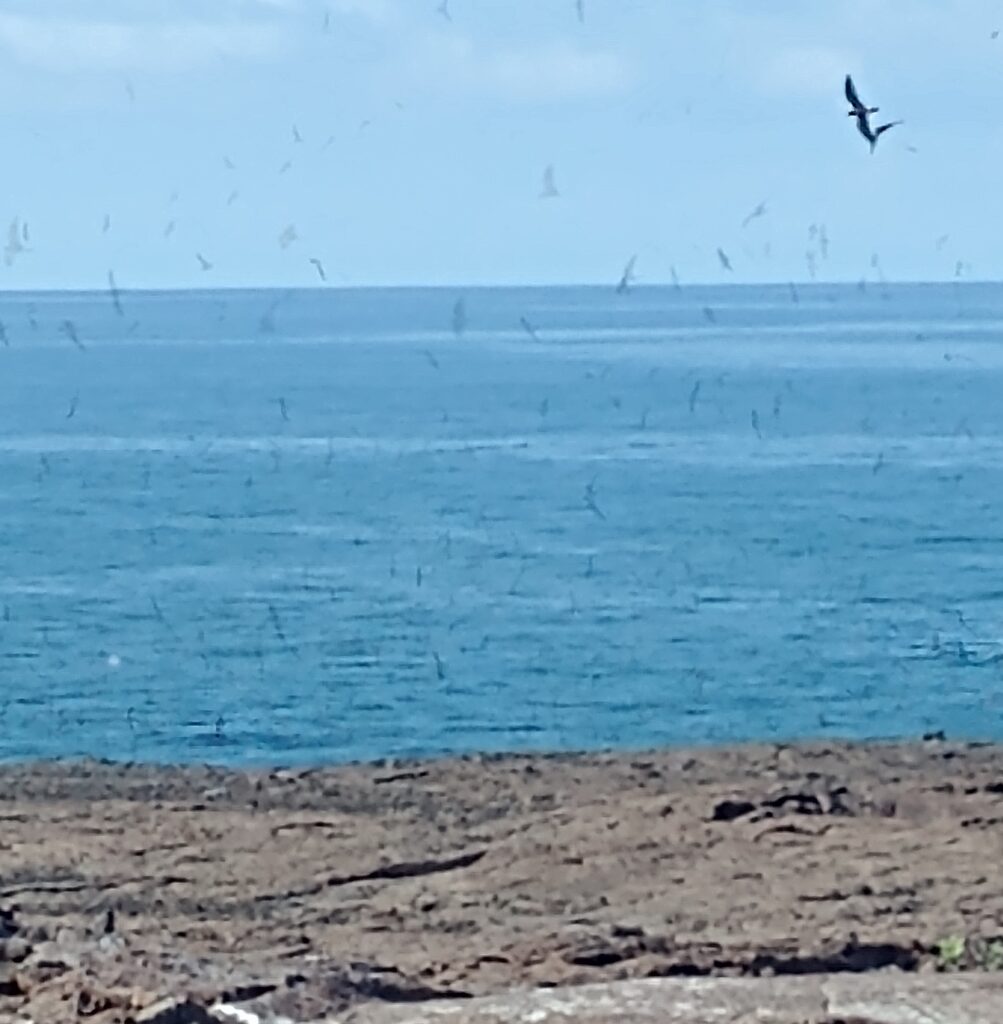
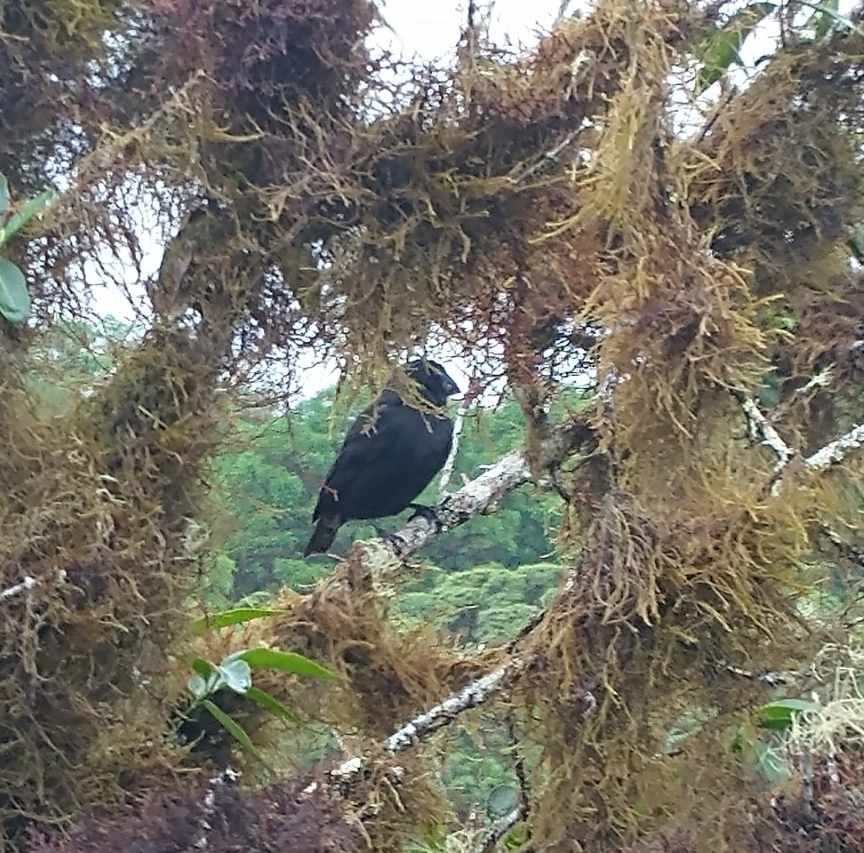
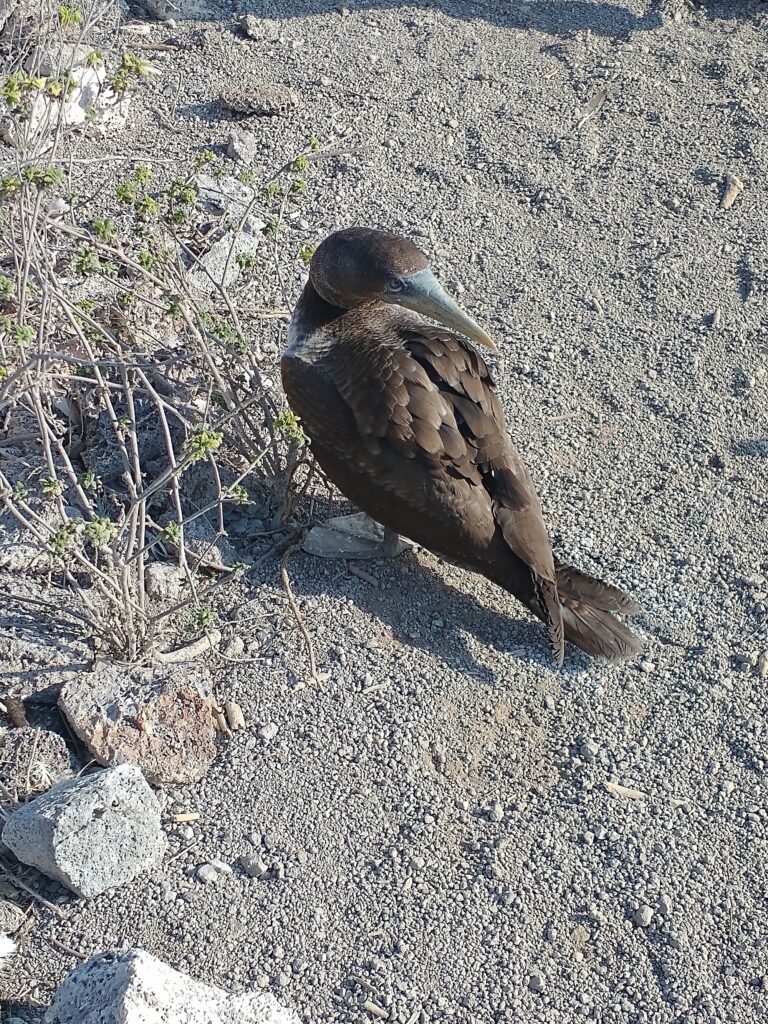
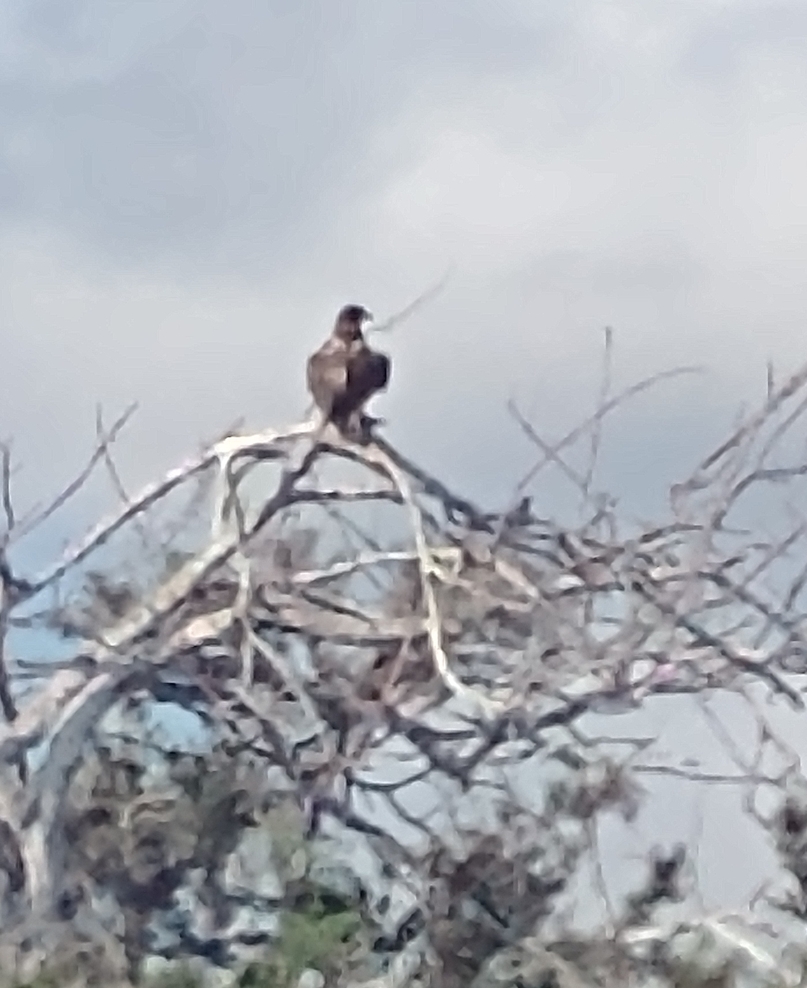
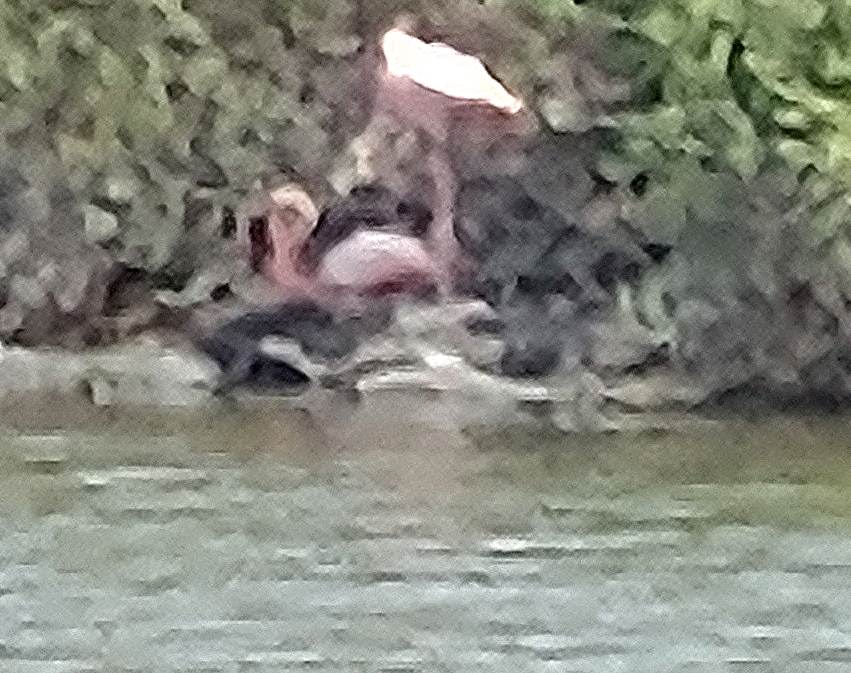

Petrels are the smallest marine birds. They only come back to land every four years for the purpose of nesting and mainly live off whale refuse while at sea. They flocked the lava fields at the edge of the sea and were prey to the Pilot Birds. We watched as a Frigate Bird pulled a Pilot Bird out of the sky, so all the birds have predators until you get to the mighty Hawk at the top of the food chain.
Especially noteworthy of the birds is the male Majestic Frigate (picture from a far), which has an impressive bright red chest. As part of the mating ritual, the male will inflate his chest to about three times the normal size. Unfortunately, if a predator comes into the area, he is unable to fly, and it will take about 30 minutes to deflate the chest. What a choice…. love life or life.
Our favorite of all the birds were the Boobies, which had three varieties on the islands. We saw Blue Footed Boobies, Red Footed Boobies, and Nazca Boobies. They built their nest in the heavy branches of trees so the Frigate Birds cannot steal the eggs or harm the chicks and fledglings. All Boobies survive by eating fish, but the three have different hunting ranges and different life cycles. The Nazca Boobie is white and black and lays two eggs five days apart. This is natures insurance policy. Normally the larger check will kick the new hatchling out of the nest. But if a predator has stolen the first egg or the first chick is weak, the second will become the sole survivor.
The Red Footed Boobie fishes much further out around 20 miles. The Boobies regurgitate the fish to feed the chicks and fledglings and the young babies have to be protected and fed for the first two years of their lives when they grow adult feathers. The distance to the fishing area does not support a large family. Nature has again taken action and the Red Footed Boobie has a clutch of only one egg.
The Blue Footed Boobie fishes the waters near the islands and their clutch is normally three eggs. Darwin would probably be quick to point out these birthing patterns to be examples of natural selection.
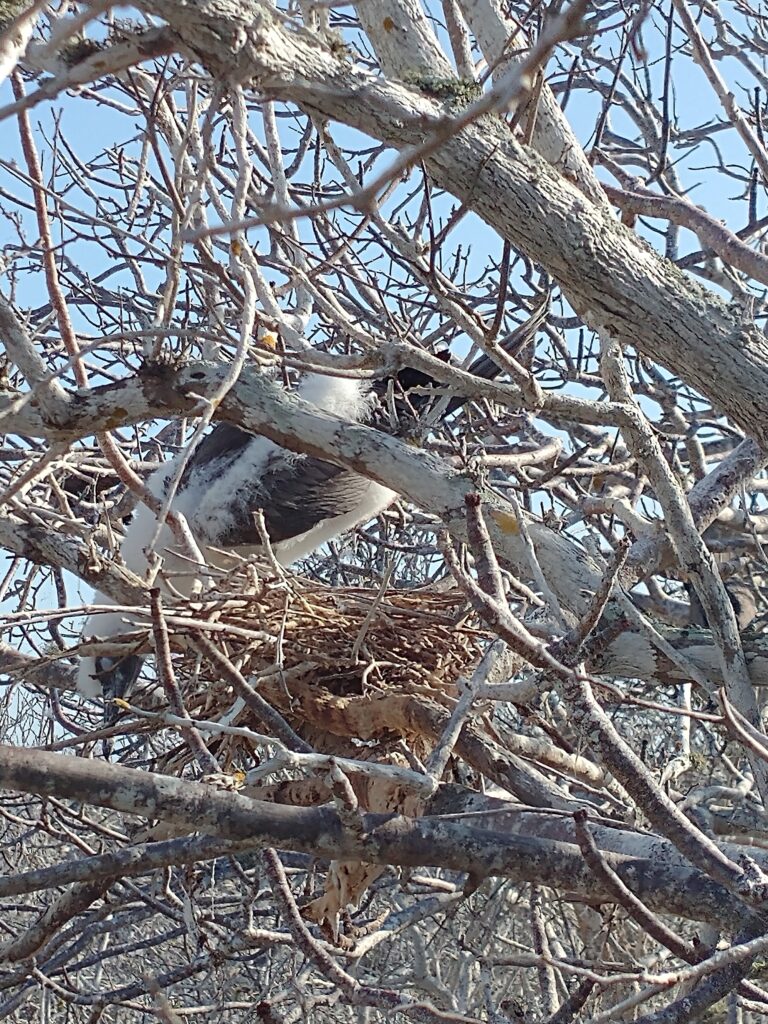


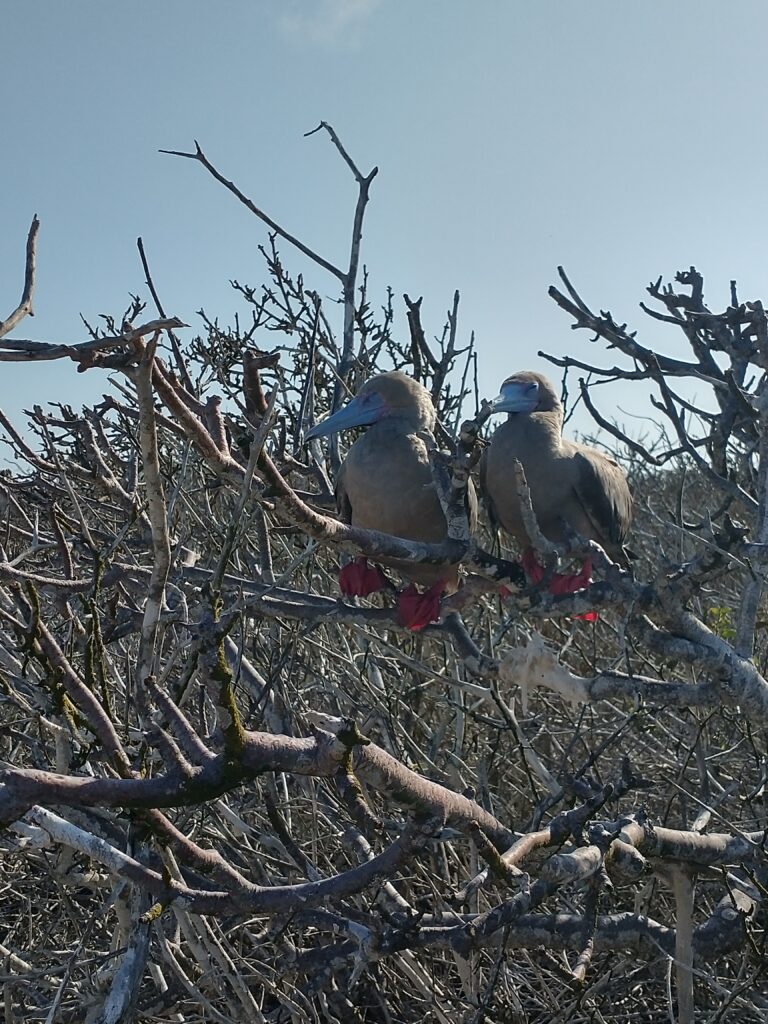

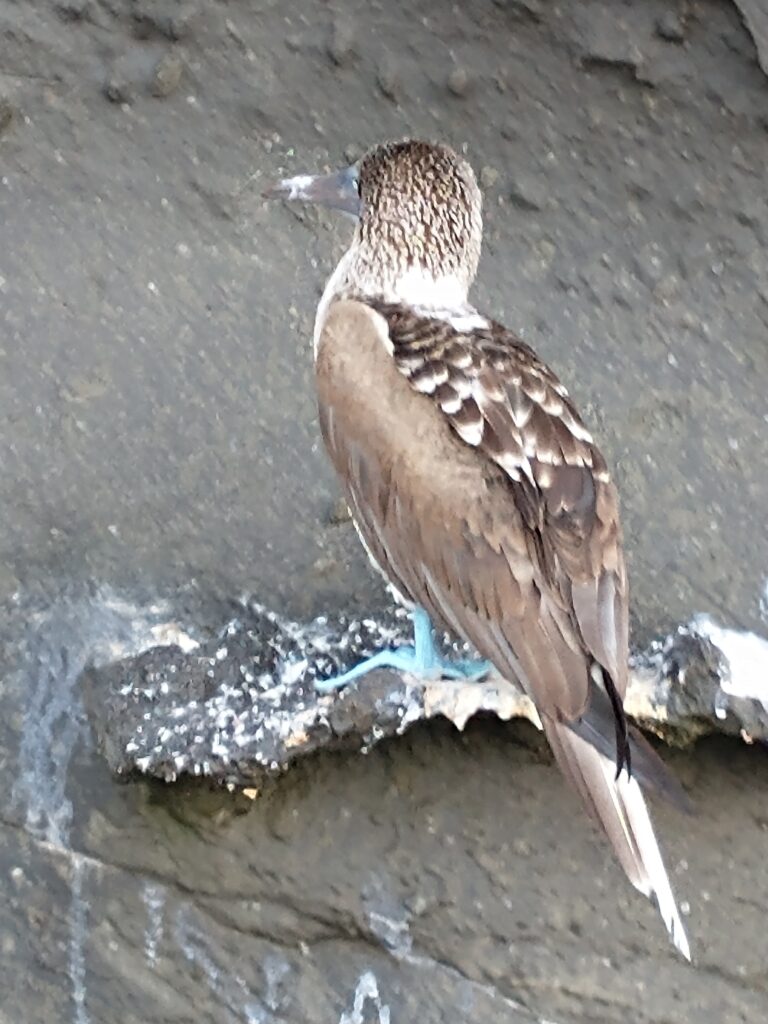
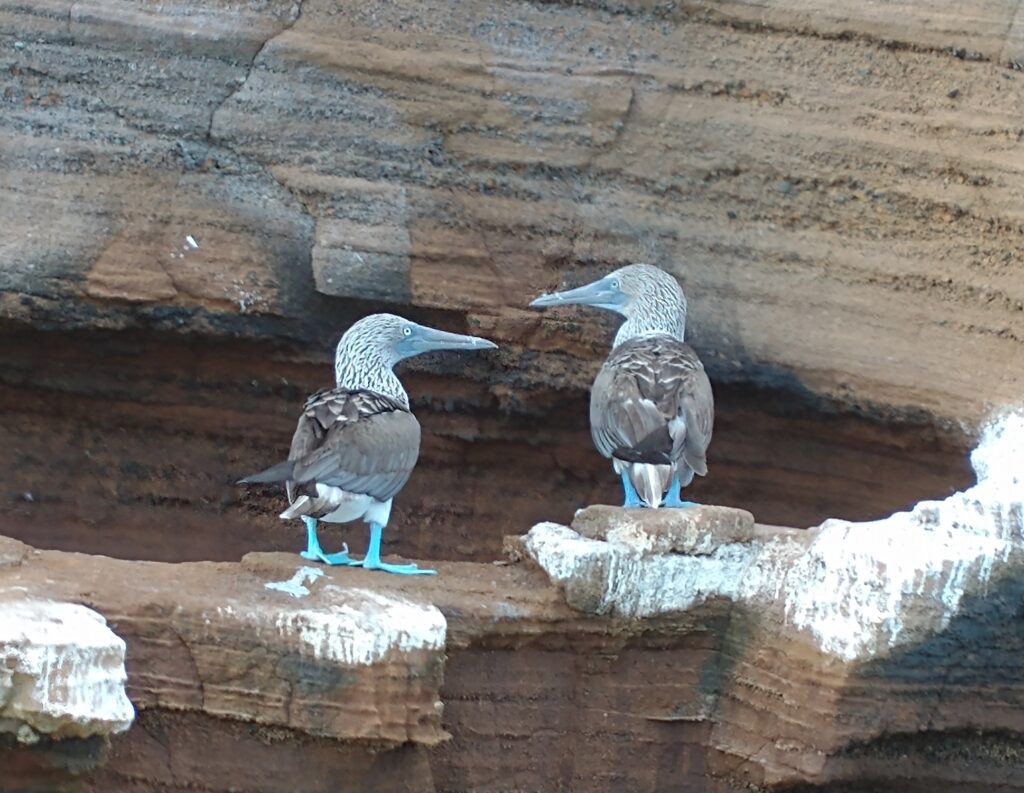
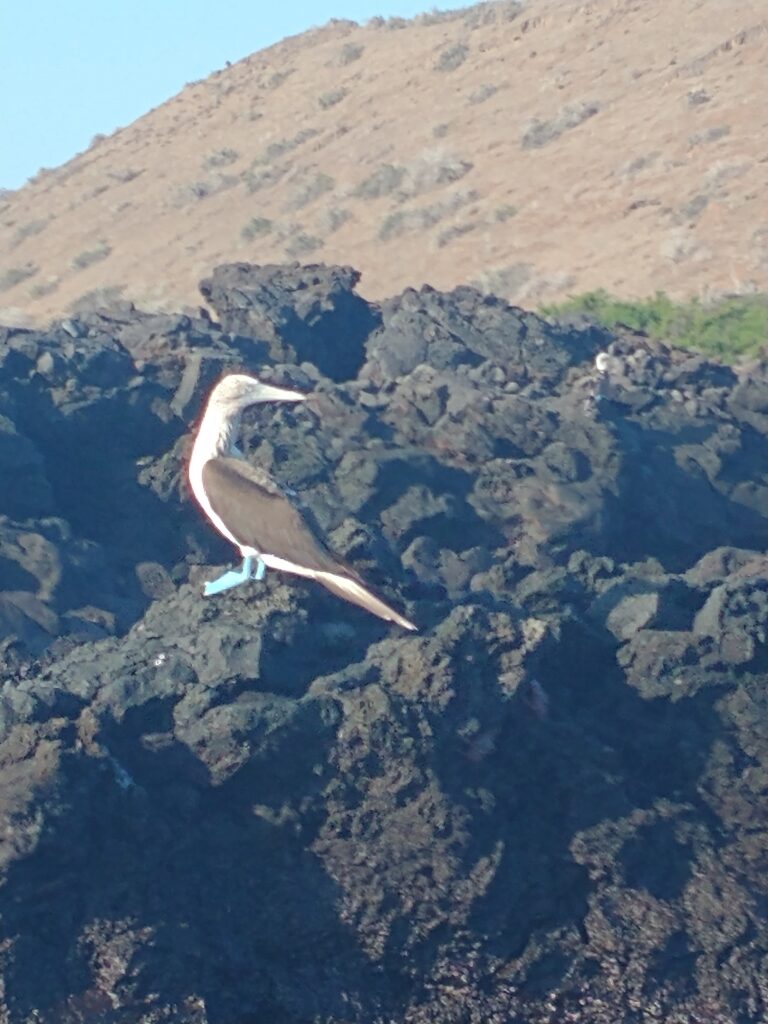

No Comments